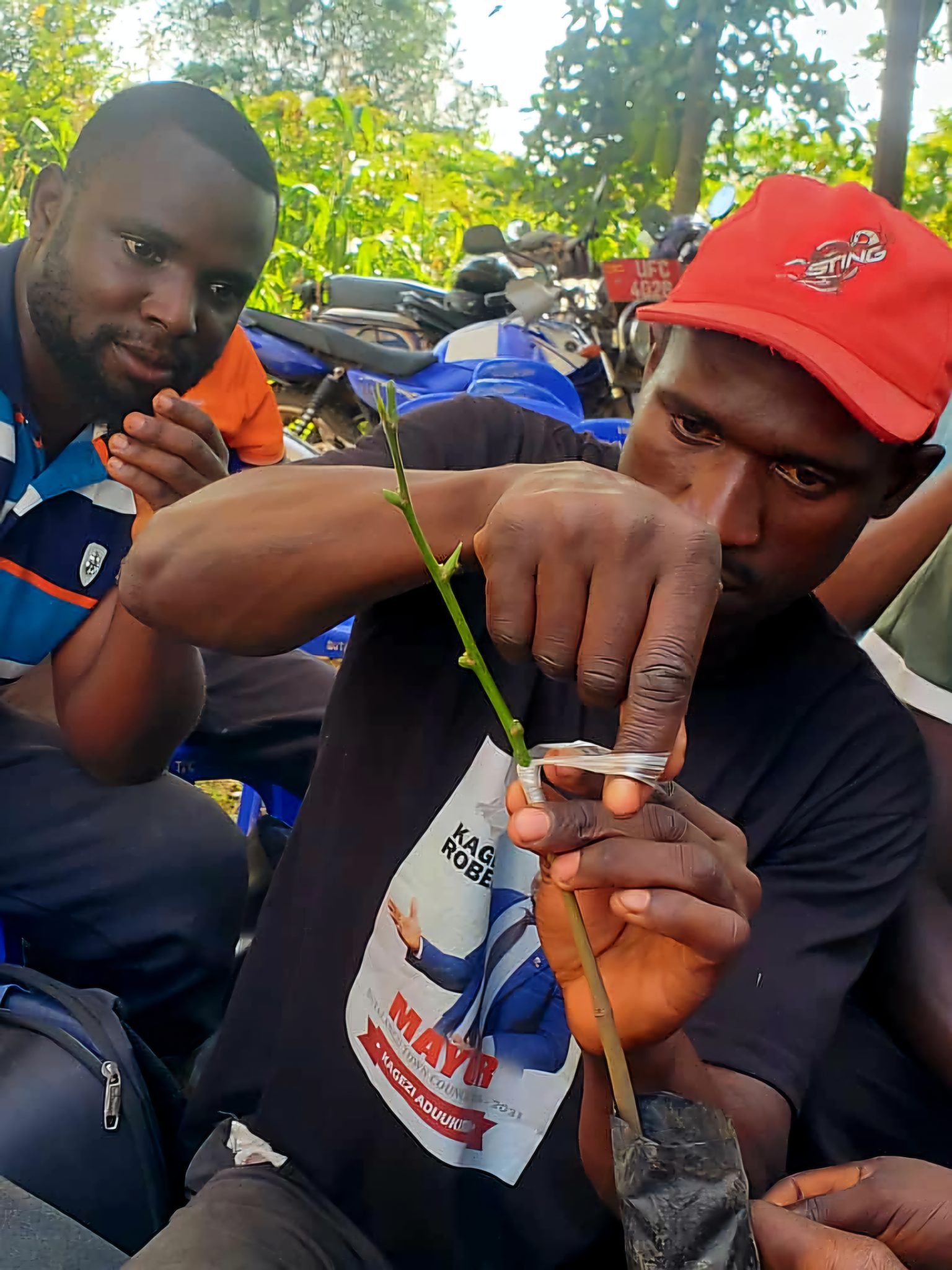Agroforestry has emerged as a key approach to climate change mitigation and adaptation, integrating trees, shrubs, and herbaceous perennial plants into agricultural systems. This practice was adopted by MUZARDI in the cattle corridor districts of the Lake Victoria Crescent Agro-Ecological Zone, to enhance economic, environmental, and social resilience for farmers, helping them diversify their livelihoods.
In partnership with FAO, the institute sought to establish tree nurseries, as a source for high-quality planting materials, such as seeds, seedlings, and cuttings. The project
Integrating Climate Resilience into Agricultural and Pastoral Production in Uganda, was implemented under a Farmer/Agro-pastoralist Field School Approach in Nakaseke, Nakasongola, Kayunga, and Luweero Districts.
Working alongside key partners like the National Forestry Resources Research Institute (NaFORRI), Caritas Kasanaensis (CKL), and local farmer associations in Kayunga and Nakasongola, MUZARDI
organized training sessions to train farmers on tree nursery establishment and management. A total, of 635 farmers were trained at different nursery sites within local communities.
Humphrey Kigabane, an agroforestry technician at MUZARDI, highlighted the importance of establishing tree nurseries to curb biodiversity loss, conserve threatened tree species and combat climate change.
Dr. Boaz Odoi, a senior research officer at NAFORRI, trained farmers on selecting suitable nursery sites, preparing the soil, designing the nursery beds, and practicing tree propagation techniques such as grafting and budding. He advised farmers to have nursery beds oriented in an East-West direction to ensure that seedlings receive the optimal shade, especially during the early stages of growth.
Farmers appreciated the hands-on training, as it allowed them practice the techniques using locally available materials like poles, grass, and banana fibers. They also practiced grafting fruit tree seedlings that enhance their agroforestry initiatives.
Identified agroforestry tree species include Eucalyptus (GU8, GU7 & GU), Maesopsis eminii (Musizi), Grevillea, Albizia chinensis (Albizia), Chrolia (Migavu), fruit trees (mango, avocado, orange, guava, jackfruit, pawpaw), and other high-value species like Entasesa, Omusizi, Cocoa, sour soup (Ekitafeeri), Prunus Africa (Entasesa), and Cinnamomum verum (Mudalasin). These seedlings are also available at MUZARDI.
FAO supported private nursery operators to raise indigenous and fruit tree species for the communities in the target districts. the contributions in kind included shed- nets, farm equipment and tools, fencing materials and seedlings. Currently, all the shed nets were installed and the facilities were functional. According to Kunikina Fred, the support I received from FAO has enable me to raise over 20,000 clone Eucalyptus 50,000 300 pine, Terminallia, 200 Alstonia Bonii and 3,000 Albizia Chloria seedlings . After the training by MUZARDI, we were able to establish 15 nursery beds which were using to protect the seedlings from too much light. I really thank FAO and MUZARDI for this support.
that the support has reduced my costs because I was able to getting materials, tank of 3000 litres, three watering can and other equipment since I received the support I have been able to raise 21,000 clonal eucalyptus, 2000 cocoa, 500 jack fruit, and 1,000 soursop seedlings. I really appreciate FAO for this support.
Mariam Namuyomba the operator of Kayunga community tree nursery said
I was not raising cuttings but now I have raised 30,000 cuttings, I didn’t have a shed net but FAO gave ne 2 shed-nets and now I can raise seedlings for eucalyptus, indigenous tree species. Secondly, I didn’t know Mariam before but after meeting her at the seed fair she visited my nursery and gave me advice on how to manage my nursery and I have been able to raise quality tree seedlings”
According to Tamuzadde, the district nursery operator, Kayunga,

